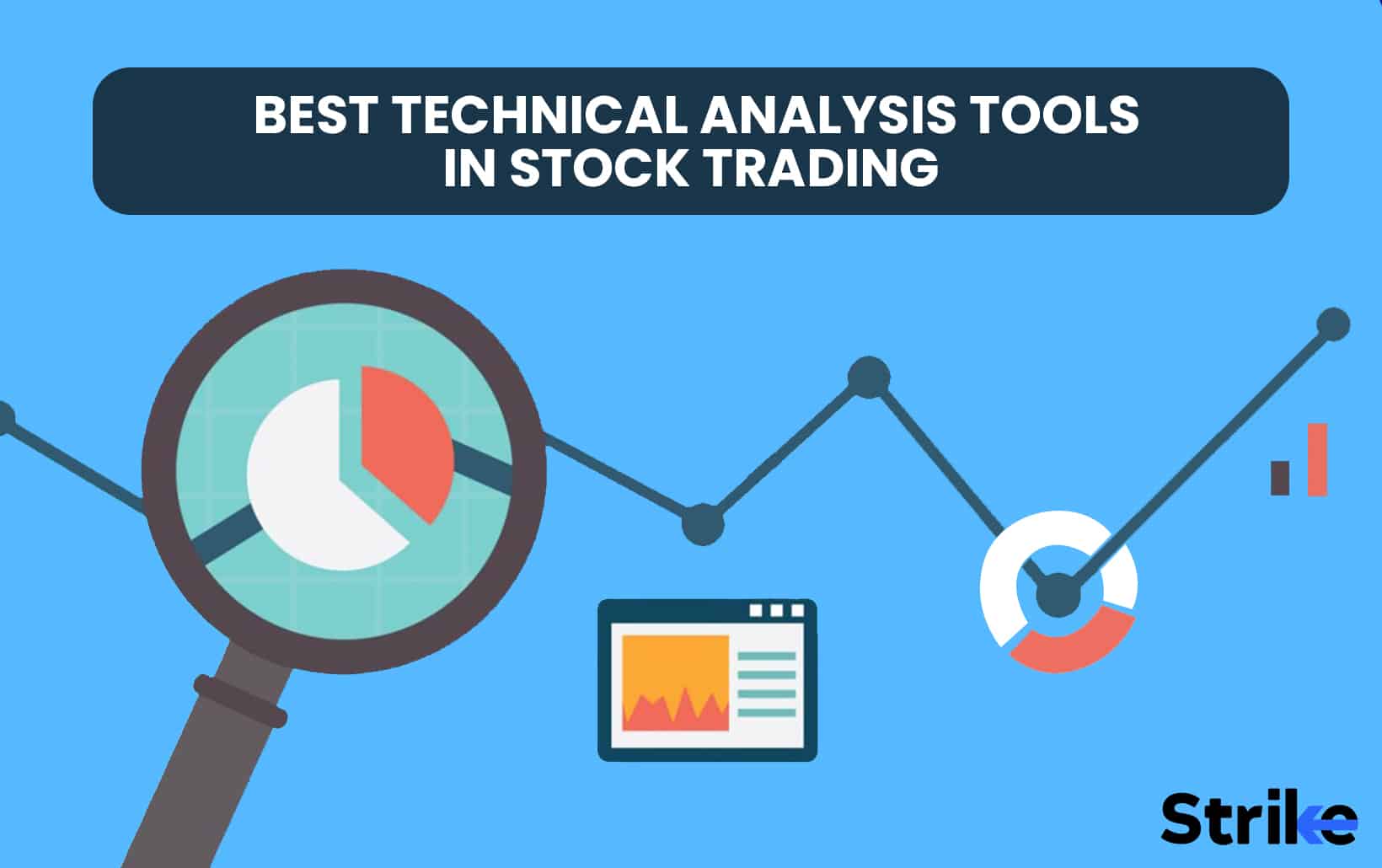
Technical analysis tools are used by investors to analyze past market data and identify patterns that can be used to predict future market movements. Technical analysis focuses on comparing historical company data with ongoing price trends, to uncover new trading opportunities.
Technical analysis works on the principle of combining trading techniques with price forecasts depending on past movements. Unlike fundamental analysis which uses company data such as annual reports and sales, technical analysis uses historical data for making buying and selling decisions
Technical analysis tools are used by traders to get an inside into demand-supply balance, and also to understand market psychology. Altogether, These tools and indicators are used to get an overall idea about whether prices would fall or rise. Technical analysis tools generate buy and sell signals and depending on their accuracy and complexity these tools can be compared as the best technical analysis tools.
1. The Average Directional Index (ADX)
The average directional index is a technical analysis tool used by traders to determine the strength of trends. Two auxiliary indicators, the negative directional indicator (-DI) and the positive directional indicator (+DI), indicate whether the trend is up or down. As a result, the ADX frequently has three different lines.
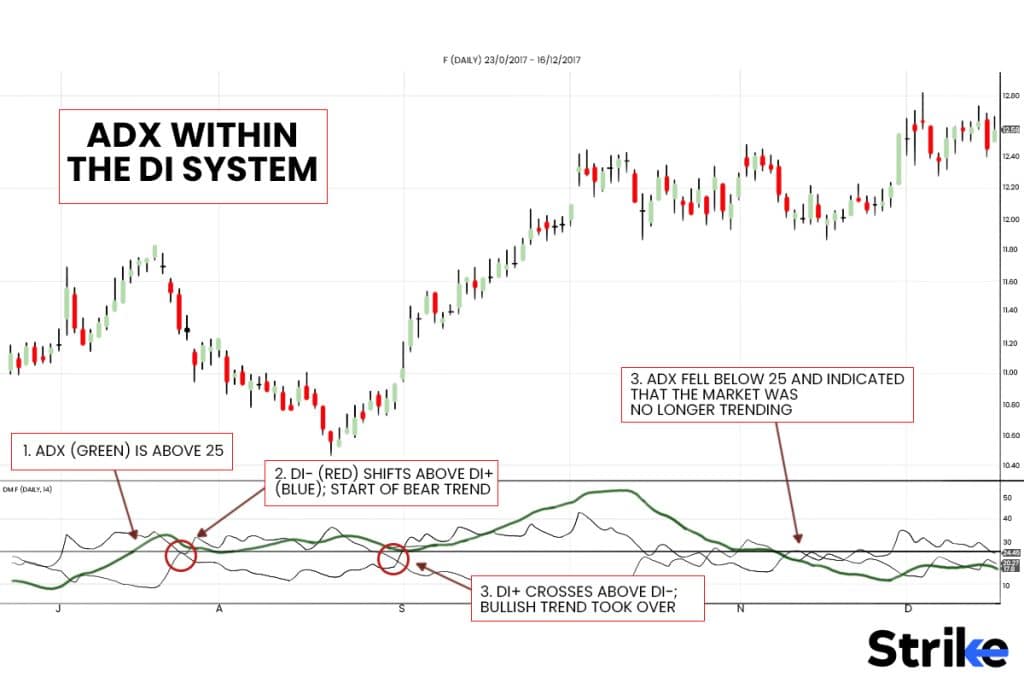
These are employed to determine if a trade should be entered into long or short or even at all. This was developed by Welles and Wilder for preparing daily charts, now it is used worldwide to determine the strength of trends. Although it is the most appropriate technical analysis tool, still it has some shortcomings like Crossovers can be frequent, even excessively frequent, which can lead to uncertainty and possibly lost money on deals that swiftly swing the opposite way.
When ADX levels are less than 25, these are referred to as false signals and are more frequent. Nevertheless, occasionally the ADX rises above 25, but only briefly, before reversing with the price.
2. The On-Balance-Volume indicator (OBV)
On Balance Volume (OBV) is a technical analysis indicator that adds volume on up days and subtracts volume on down days to quantify the purchasing and selling pressure. All of the trading volumes for the day are regarded as up-volume when the security closes higher than the prior close. All of the day’s volume is regarded as down-volume when the security closes at a lower price than the prior close.
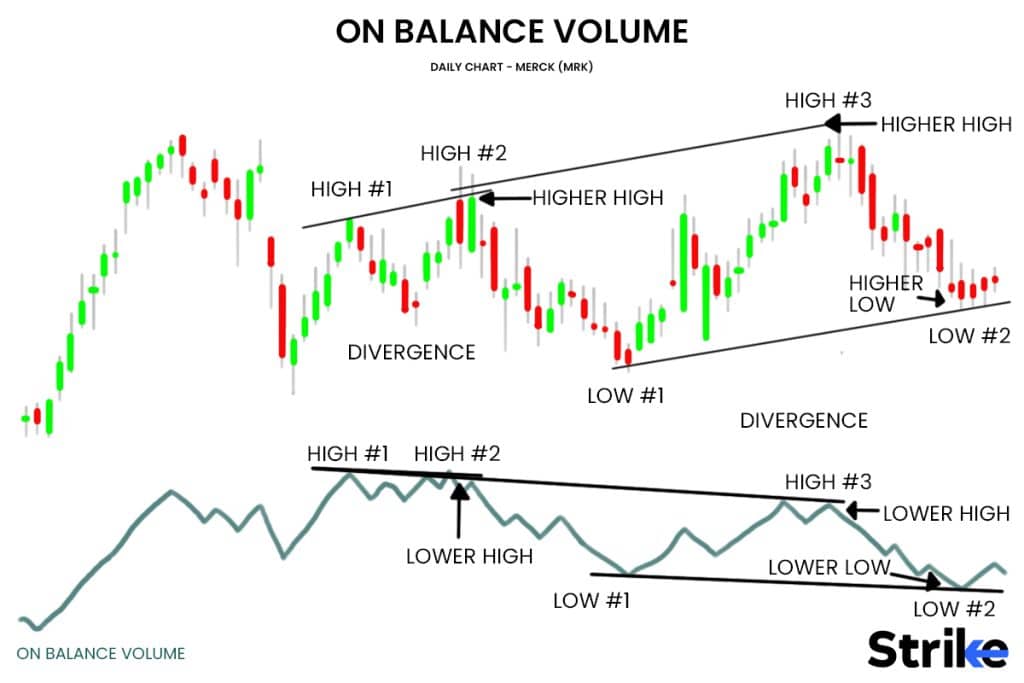
The OBV is calculated by the following formula:
OBV = Yesterday’s OBV + Today’s Volume when today’s close is higher than yesterday’s close.
OBV = Yesterday’s OBV – Today’s Volume when today’s close is lower than yesterday’s close.
OBV = Yesterday’s OBV when today’s close is equal to yesterday’s closing.
OBV has the drawback of being a leading indicator, which means that while forecasts may be made, little can be inferred from the signals it generates about what has transpired. This makes it more likely to generate erroneous signals.
Lagging indicators can consequently be used to balance it. To find OBV line breakouts, add a moving average line to the OBV; a price breakout is confirmed if the OBV indicator also breaks out at the same time.
3. The Accumulation/Distribution line (A/D line)
The accumulation/distribution (A/D) line examines where the price is closed within the period’s range and multiplies that figure by volume to determine the supply and demand of an asset or security.
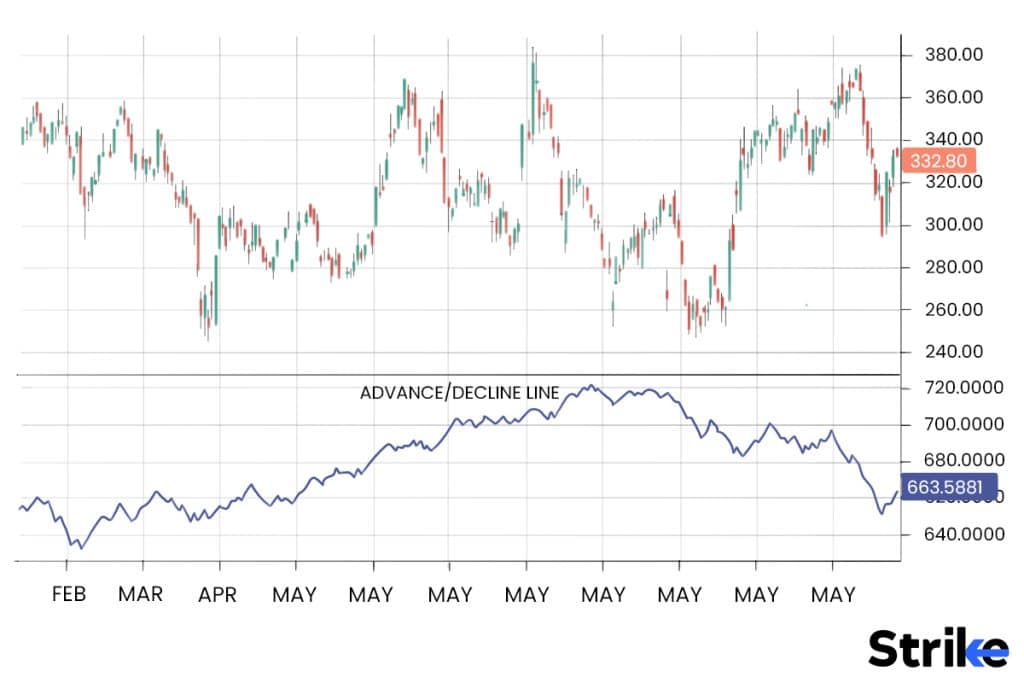
Since the A/D indicator is cumulative, its value is added to or deducted from the previous period’s value. The Accumulation/Distribution line (A/D line) is calculated by the given formula:
MFM= (Close price −Low price )−(High price−Close price)/High price−Low price
The indicator’s primary usage is to keep an eye out for divergences. Divergences are poor timing signals because they last for a long time. The divergence between the indicator and price does not necessarily portend an impending reversal. The price may not reverse at all or it may take a very long period.
4. Aroon Oscillator
Between Aroon-Up and Aroon-Down, there is a difference called the Aroon Oscillator. Chartists can also see the difference between these two indications using the Aroon Oscillator, albeit these two indicators are typically plotted combined for easy comparison. With zero as the midpoint, this indicator oscillates between -100 and +100.
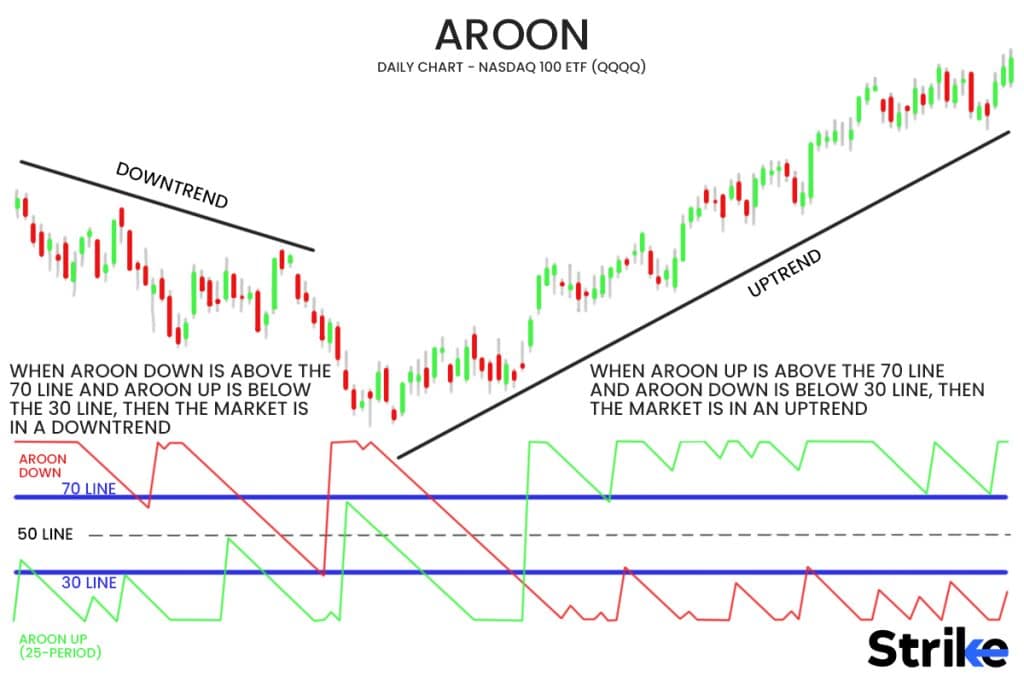
When the oscillator is positive, there is an upward trend bias, and when it is negative, there is a downward trend bias. To find stronger signs, chartists can also raise the bull-bear threshold. The Aroon Oscillator was created by Tushar Chande (1995).
This technical tool is calculated by the following formulas:
- Aroon Oscillator=Aroon Up−Aroon Down
- Aroon Up=100∗(25−Periods Since 25-Period High)/25
- Aroon Down=100∗(25−Periods Since 25-Period Low)/25
When a long-term trend emerges, the Aroon Oscillator maintains a trader in the position. For instance, during an uptrend, the price frequently sets new highs, keeping the oscillator above zero.
The indicator won’t give good trading indications when the market is choppy because the oscillator and price will be swinging back and forth a lot.
5. The Relative Strength Index (RSI)
The Relative Strength Index (RSI) is used to assess whether a security’s price is overvalued or undervalued, RSI evaluates the speed and amplitude of recent price fluctuations. J. Welles Wilder Jr. created the indicator, which he first published in his groundbreaking 1978 book New Concepts in Technical Trading Systems.
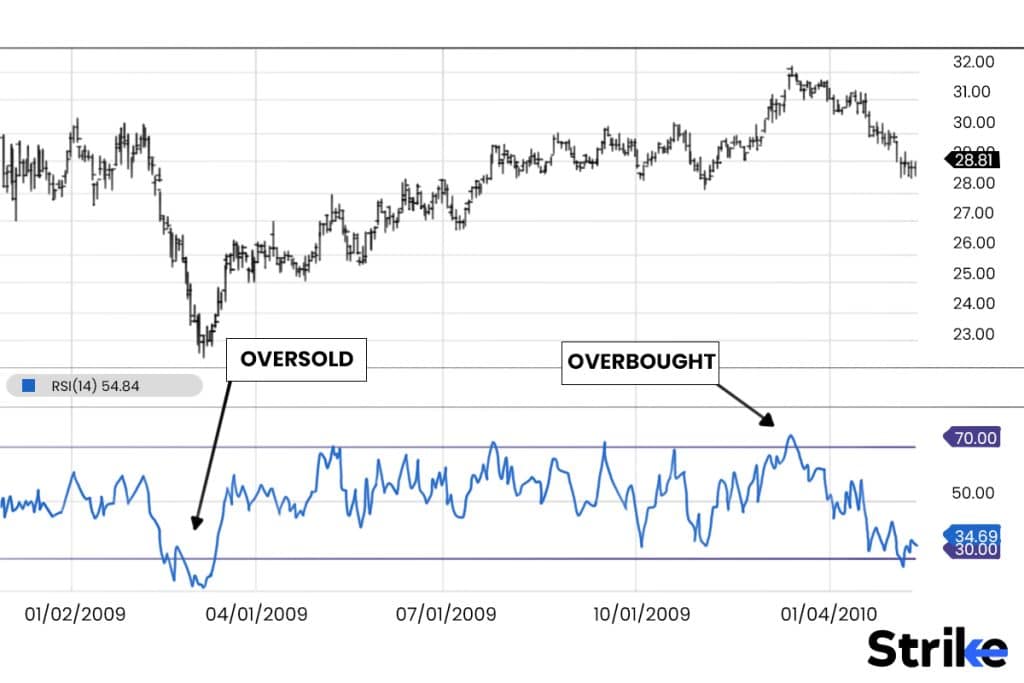
RSI is calculated with the help of two formulas:
RSI (step one) =100−[100/{1+(Average gain/Average loss}

In an oscillator that is positioned underneath a price chart, the RSI contrasts bullish and bearish price momentum. Its signals, like those of other technical indicators, are most trustworthy when they follow the long-term trend.
True reversal signals are uncommon, and it can be challenging to distinguish them from false alarms. For instance, a bullish crossover followed by a sharp drop in stock would be a false positive. A false negative would occur if a bearish crossover occurred but the stock then sharply increased.
6. Moving Average Convergence Divergence (MACD) Indicator
The 26-period exponential moving average (EMA) is subtracted from the 12-period EMA to create the moving average convergence/divergence (MACD, or MAC-D) line. A nine-period EMA of the MACD line serves as the signal line. MACD works best with daily periods, which typically have a length of 26/12/9 days.
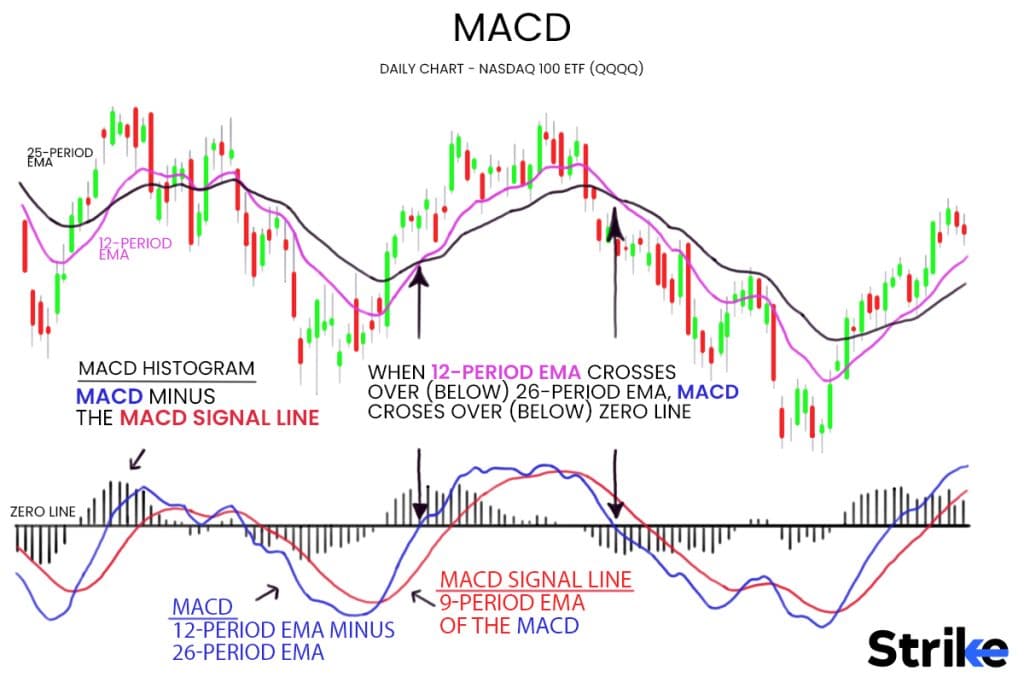
MACD is calculated by using the formula,
MACD={12-Period EMA }-{ 26-Period EMA}
A moving average divergence has some drawbacks, one of which is that it frequently signals a potential reversal even though none occurs, leading to a false positive. The fact that divergence doesn’t predict all reversals is the other issue. In other words, it forecasts too many false price reversals and too few actual price reversals.
7. The Stochastic Oscillator
The Stochastic Oscillator is prominent technical indicator for producing overbought and oversold indications is the stochastic oscillator.
It is a well-known momentum indicator that was created in the 1950s.
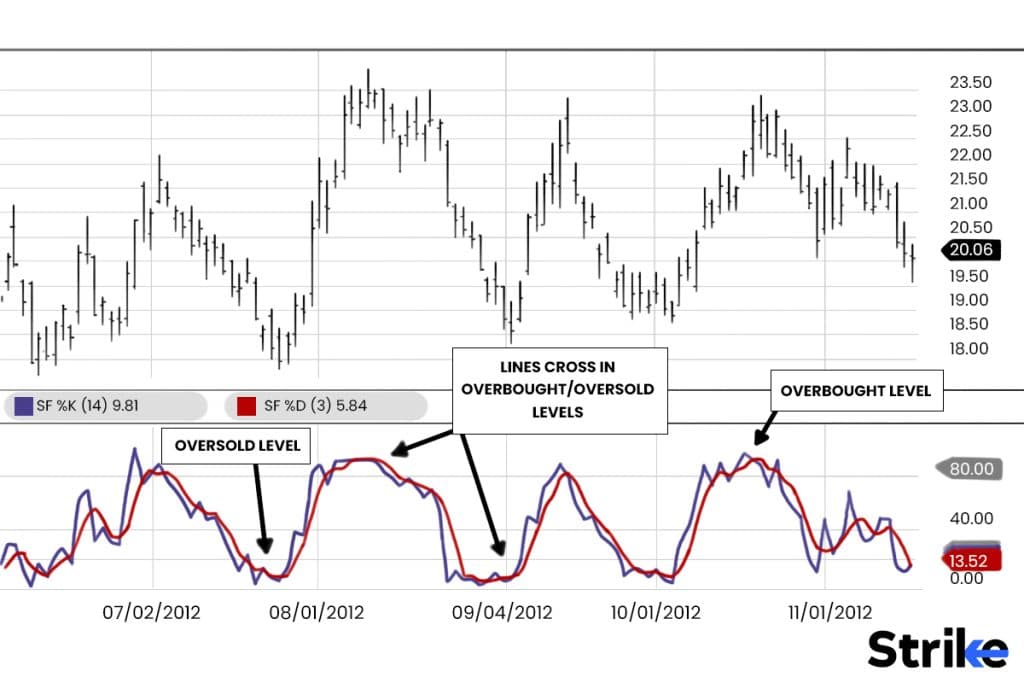
The stochastic oscillator’s main drawback is that misleading signals have been known to be generated by it. This occurs when the indicator generates a trading signal but the price does not respond to it, perhaps leading to a loss of trade. This can occur relatively frequently during erratic market circumstances.
8. Fibonacci Retracement
Fibonacci retracement is a technique used in technical analysis to identify levels of support and resistance. Its name is derived from the Fibonacci number sequence, whose ratios offer price levels at which markets typically retrace a portion of a move before a trend continues in the original direction.
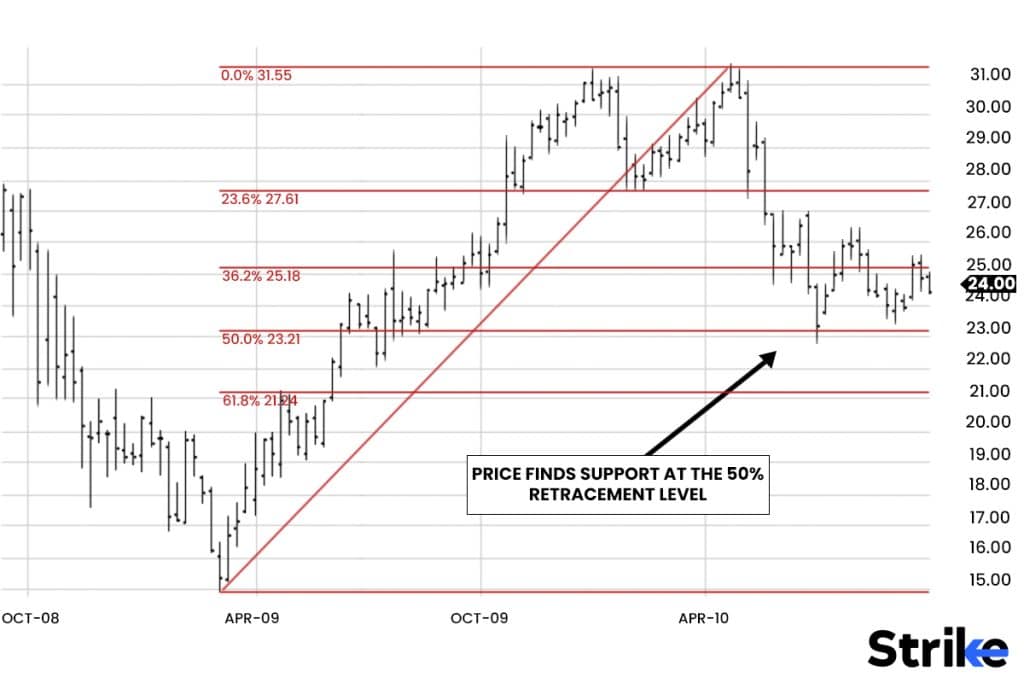
The Fibonacci numbers’ history is fascinating. They are founded on a concept known as the Golden Ratio. One and zero are the first two numbers in a series. Then, continue to add the first two digits to produce the following string of numbers:
0, 1, 1, 2, 3, 5, 8, 13, 21, 34, 55, 89, 144, 233, 377…
The price may find support or resistance at the retracement levels, but there is no guarantee that the price will halt there. This is why other confirmation indications, like the price beginning to bounce off the level, are frequently used.
9. Parabolic SAR
An asset’s price direction can be ascertained using the parabolic SAR, which is also utilised to signal when the price direction is changing. J. Welles Wilder Jr., who also invented the relative strength index, devised the parabolic SAR, also referred to as the “stop and reversal system” (RSI). Depending on which way the price is moving for an asset, the Parabolic SAR indicator shows as a series of dots above or below the price on a chart.
10. Screener Plus
One of the best technical analysis tools is Charles Schwab’s normal trading platform, and Screener Plus is a standout component of that platform. It makes use of real-time data streaming. Clients can use it to filter stocks and ETFs using a variety of important and useful criteria. It also includes the unique signs created by Recognia.
11. Thinkorswim
In Thinkorswim, there are two categories of technical indicators: studies and strategies. Technical indicators like studies determine certain values for each bar on a chart. On the other hand, strategies also give you historical trade signals, which are the dates and prices on the chart at which a specific price-based criterion was met.
12. Slope of Hope
To share charts and trading experiences with a select handful of his admirers, Slope of Hope was launched in 2005 by inventor and perma-bear Tim Knight, who had just sold his charting website, Prophet.net, to TD Ameritrade. Nowadays, it serves as a hub for technical analysis, trading suggestions, charts, and discussions among traders of all shades.
Many of the features, such as a potent technical charting package, are available for free and are comparable to those of much more expensive websites. One of SlopeCharts’ most useful features is SlopeRules, which enables you to design and test a trading system using mathematical formulae.
Set up an alert to notify you when the circumstances are met, then drag and drop the rules you want to apply on a chart, test them, and then utilise them.
What is a Technical Analysis Tool?
Technical analysis tools are used to determine whether a stock or security is in trend by using multiple factors like price and volume fluctuations etc. These tools are used by traders to identify and analyse available opportunities, by analysing historical trends and data.
They also help to evaluate the relative time taken by securities to reach the highest and lowest price points during a time interval. Some of the most popular technical analysis tools used by traders include the Stochastic Oscillator, Parabolic SAR and the Average Directional Index (ADI).
What is the best technical analysis tool for “hourly” charts?
For hourly charts the best technical analysis tool is MACD. By deducting the longer moving average from the shorter one, the MACD converts two trend-following indicators, or moving averages, into a momentum oscillator. Thus, the MACD offers trend following and momentum, the best of both worlds.
As the moving averages converge, intersect, and diverge, the MACD moves above and below the zero line. To generate signals, traders should watch for signal line crossovers, centerline crossovers, and divergences. The MACD is unbounded, which makes it less effective at spotting overbought and oversold levels.
What is the Best Technical Analysis Tool for Daily Charts?
On Balance, Volume is considered one of the best technical analysis tools for preparing daily charts. The OBV indicator represents the difference between the up and down volumes over time. The volume that is in the upward direction is the volume on a day when the price rose. On a day when the price declines, the volume, is the volume.
According to whether the price increased or decreased each day, volume is either added to or deducted from the indicator. OBV users also keep an eye out for divergence. When the price and the indication are moving in opposite directions, this happens. Suppose the price is going up but the OBV is going down, that can be a sign that there aren’t enough strong purchasers supporting the trend, and it might soon turn around.
- Moving average convergence divergence (MACD)
- Relative strength index (RSI)
- Stochastic Oscillator
What is the Best Technical Analysis Tool for Quarterly Charts?
The best technical analysis tool for quarterly charts depends on the specific needs and preferences of the investor. Popular tools that are effective for analyzing quarterly charts include moving averages, relative strength index (RSI), MACD, and Fibonacci retracement levels.
Moving averages can help identify trends and potential support and resistance levels, while RSI can indicate overbought or oversold conditions. MACD can reveal trend changes and potential buy or sell signals, and Fibonacci retracement levels can assist in identifying potential price targets and support and resistance levels.
What are the Best Technical Analysis Tools for Investors?
Technical traders and chartists can generate buying and selling signals using a wide range of indicators, patterns, and oscillators. Following are some of the best technical analysis tools for investors:
- Average Directional Index
The average directional index (ADX) is an indicator of trends that gauges a trend’s strength and momentum. Depending on which way the price is heading, the trend is thought to have significant directional strength when the ADX is above 40. The trend is deemed weak or non-trending when the ADX indicator is below 20.
- Aroon Indicator
Tushar Chande created the Aroon indicator, which shows whether a price is moving or in a trading range. It can also help predict when trading ranges will transition to trends, as well as the start and intensity of a new trend. The Aroon indicator is the result of combining the AroonDown and AroonUp indicators.
- The Relative Strength Index (RSI)
J. Welles Wilder created the Relative Strength Index (RSI), a momentum oscillator that gauges the rate and variance of price changes. The RSI fluctuates between zero and one hundred. The RSI is typically regarded as overbought when it rises above 70 and oversold when it falls below 30. Searching for divergences and failure swings can produce signals. Additionally, the broad trend can be determined using RSI.
How to select the Best Technical Analysis tools?
A good technical analysis tool should have qualities like higher accuracy, less complexity, easy implementation and wider applications.
How accurate are Technical Analysis tools?
Technical analysis tools are not 100% accurate. Technical analysis involves likelihoods and probabilities, not promises. Even when something doesn’t always function, it can still be incredibly effective at making money if it works more frequently than not.
Technical analysis tools can be really helpful in predicting future trends but this forecast cannot always be true. Various other factors are also responsible for the occurrence of a trend like internal news and market psychology, which cannot be predicted with the help of these tools.
How do Traders use Technical Analysis tools?
The technical analysis seeks to predict price movements by examining historical data, mainly price and volume. It helps traders and investors navigate the gap between intrinsic value and market price by leveraging techniques like statistical analysis and behavioural economics.
Do Traders Benefit from Technical Analysis Tools?
No, technical analysis tools cannot always guarantee 100% success in the market. Various other variables are also involved in determining the price of a security. The biggest benefit that traders achieved by using technical analysis tool are that it minimises the risk of loss.
By taking into consideration various effective variables that might affect the price of a security, technical analysis tools also rely on historical data to predict future prices. Technical traders are not the only ones that employ technical analysis. Fundamental traders also use these tools to maximize profits in the market.



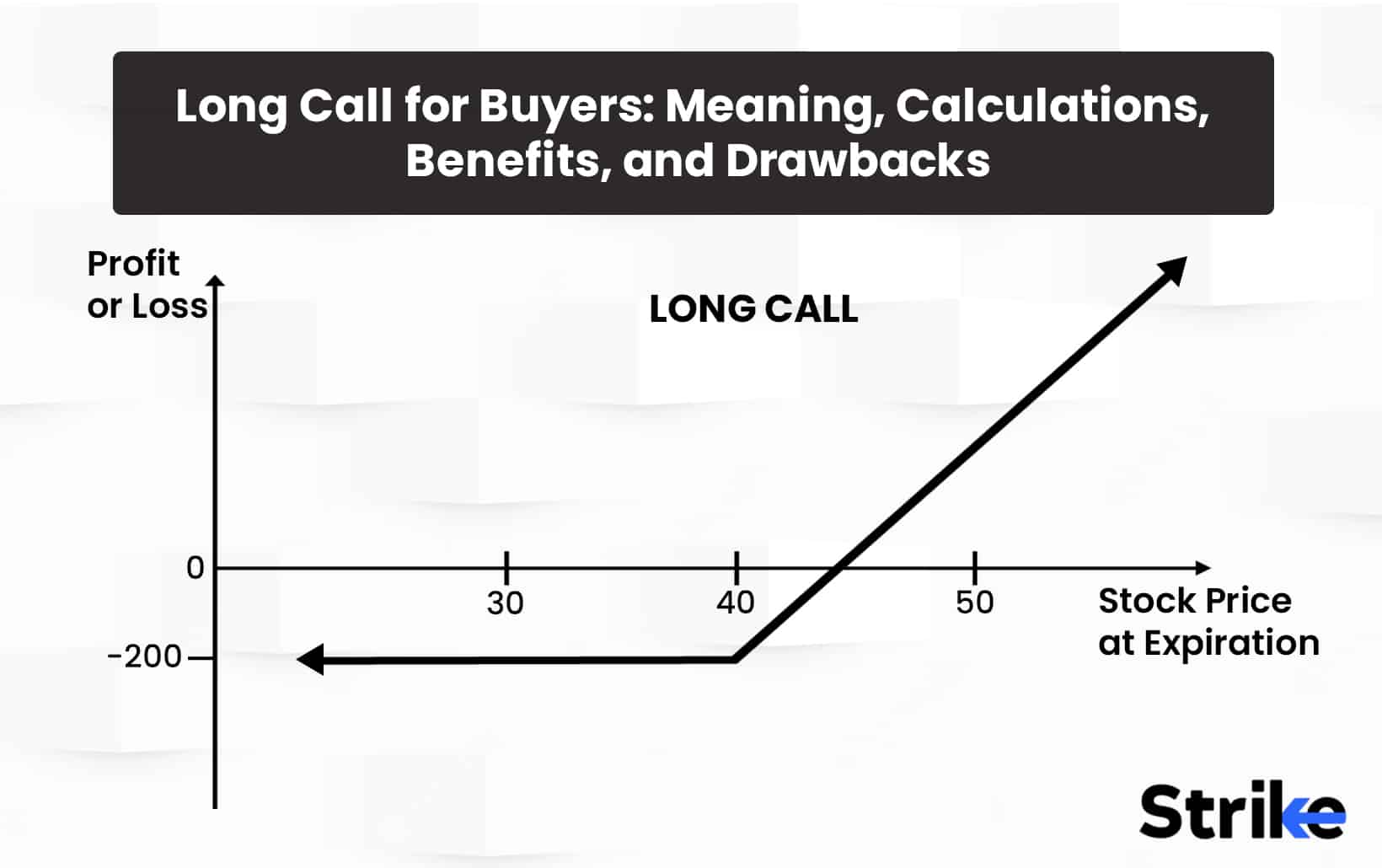
![85 Common Stock Market Terminologies for Dummies [Updated List for 2025] 58 85 Common Stock Market Terminologies for Dummies [Updated List for 2025]](https://www.strike.money/wp-content/uploads/2025/04/Popular-Stock-Market-Terms-for-Beginners-Banner.png)







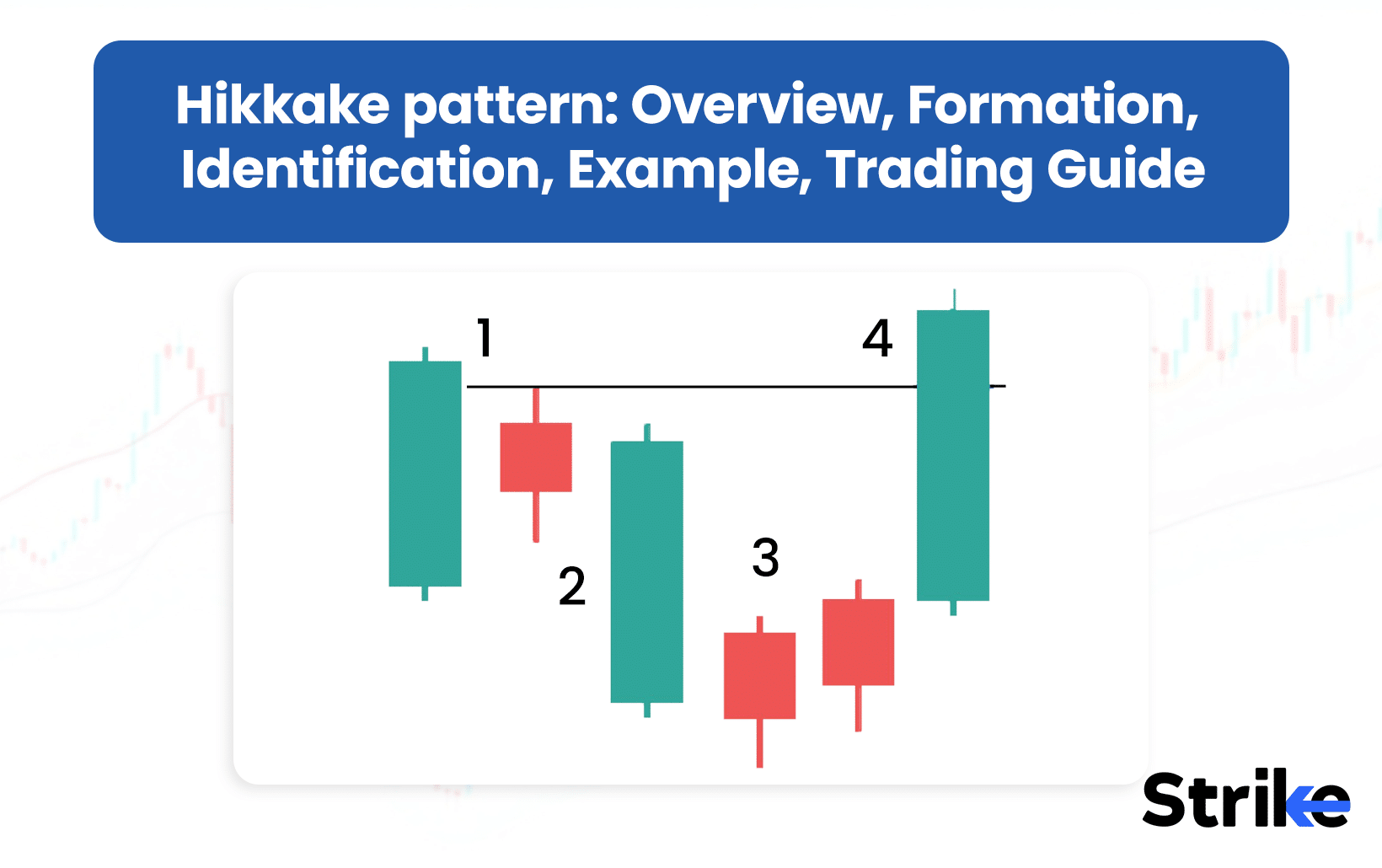



No Comments Yet.